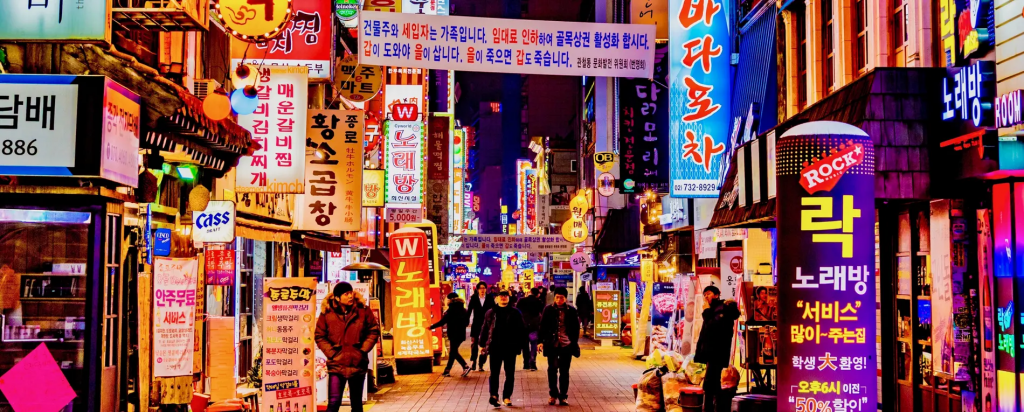
Last week, I was remaining in an enormous dance studio – one of 12 – close to the highest point of an out of control new office tower only north of the Han River in the South Korean capital, Seoul. The structure is home to an organization called SM Entertainment, which has solid professes to have developed one of the most powerful social developments of the 21st hundred years, the peculiarity of Korean popular music – K-pop.
Every age makes hit plants in its own picture. The “SM Culture Universe” was initially the vision of a Korean pop business person called Lee Soo-man who, after a concise profession as a vocalist and DJ, concentrated on PC designing in the States during the 1980s. He got back to Seoul “with the fantasy about globalizing Korean music”. 안전놀이터
In the dance studio, his nephew Chris Lee, presently the CEO, is talking me through every one of the manners by which this fantasy materialized. In the first place, K-pop symbols vanquished Asian graphs; of late, after the unprecedented progress of K-poppers BTS (the greatest selling band on the planet for the beyond two years, oversaw by rival aggregate Hybe), they have been growing their compass to all edges of the globe. New individuals from teen pop groups and young lady groups – matured 11 upwards – are selected by SM every year on lengthy agreements and this building turns into their virtual home. It is planned as a back to front spot, with each room a phase set for public interviews, fan talks and livestreams; one story is an “craftsman’s home”, where “symbols” can chill or do some cooking (while their fans watch and shout outside); one more is a “melody camp” where lyricists from across the world are flown in on revolution to make a worldwide sound. 슬롯사이트
A painting observing RM, lead vocalist of K-pop band BTS, in his old neighborhood of Goyang. Photo: Lee Jae-Won/Aflo/Rex/Shutterstock
“Something we tell [new talent],” Lee says of this activity, “is that they are addressing our country. Assuming you were in an Olympic group you would need to be prepared and we see no distinction. To be the most incredible on the planet, it takes a great deal of work. They get media preparing. They concentrate on dialects so they can speak with various crowds. We show them how to have great characters.” 바카라사이트
One of the best results of that framework is Taeyoung, who joins our discussion. Taeyoung is the head of a gathering called NCT 127 (NCT means “neo-social innovation”, 127 is Seoul’s line of longitude). NCT’s last collection, Sticker, arrived at No 3 on the US Billboard diagram. Like all teeny-bopper group and young lady musicians, Taeyoung has the bone construction and perfect coloring of a symbol and a sort of male/female weakness. He was, he makes sense of, spotted for his looks by SM headhunters in the city in Seoul 10 years prior. “Taeyoung didn’t move well at that point,” Lee says. “He didn’t rap by any means. He is presently the best artist, an extraordinary rapper. He has lived here, in that rehearsing room.”안전공원
Taeyoung is 27, however he could be 17. As the head of NCT 127, his obligations are grave. K-pop groups are about availability. Taeyoung is in close long-lasting contact with NCT 127’s fan local area, part of the way through a “computerized metaverse”, a sort of gamers’ dreamscape in which fans can meet virtual renditions of their godlike objects. (Quite a while back, SM sent off another young lady band, Aespa, in which there are four genuine individuals and four symbol individuals, each with nitty gritty histories and virtual lives.) That craving for omnipresence isn’t simply on the web. “NCT 127 are one of the greatest teeny-bopper groups on the planet,” Lee says. “Be that as it may, truly there are nine of them and they are in Korea. They can’t be wherever on the planet constantly.” thus, there are presently NCTs in China and plans to carry out renditions somewhere else on the planet.
The teen pop band as establishment? “Not an establishment, a social brand.”
Table-Turning by Korean craftsman Hejum Bä, displayed at the debut Frieze Seoul in September 2022. Photo: politeness of Hejum Bä and Whistle
Indeed, even before the pandemic, SM was making on the web shows for its gatherings including augmented reality and multi dimensional images. The ongoing point is “a 2.0 form of an internet based show”. One ongoing live show including a program of SM acts had an intelligent livestreaming crowd across the globe of 56 million.
Guardians, Lee recommends, should rest assured that their children are in safe hands. “We don’t sing about sex or medications or clubs. We don’t sell awful dreams however great dreams.” That soul obviously connects with K-pop fan armed forces not such a huge amount to long for their venerated images yet to safeguard them. There have been high-profile instances of K-pop stars ending their own lives subsequent to being designated by online maltreatment. Devotees of BTS and NCT not just sort out 24-hour vigils and lawful activity against pundits and savages on the web yet in addition try to do altruistic works in their golden calves’ names. BTS last year tended to the UN on environmental change. K-pop requests, beneficially, to that age less inspired by defiance than in policing benevolence and consideration.
Before I leave his studios, Lee sets up on a screen aphotograph of where everything began. The image comes from the Shanghai Evening Post in 2000. The first SM Entertainment boyband, H.O.T., had quite recently held their most memorable show in Beijing and the paper title coins the possibility of hallyu – “the Korean wave”. “There is something exceptionally fascinating in this photo,” Lee says and focuses in on individuals from the Chinese group who have the Korean banner sewn on their knapsacks. “There is just a single justification for that banner: since they feel, maybe interestingly, that Korea is cool.”
The aggregate consequences of that Korean coolness, which has thrived across the world over the course of the last ten years or more – in music as well as in film and computer games and TV and style and food – will be commended in a significant show at the Victoria and Albert Museum (V&A) in London toward the finish of this current month called Hallyu! The Korean Wave. My visit to the K-pop production line was important for a quick visit through Seoul – following the city’s rule of ppalli (hustle rush) – to discover where that Korean wave began and a feeling of where it is probably going to break straightaway.
In the book that goes with the V&A’s Hallyu! Presentation, SM’s Lee Soo-man guarantees that the Korean media outlet has made another worldview for social product. In the past he proposes, viable “delicate power” – remarkably, the social products of Britain and the US – followed on from monetary domain building. The Korean model, paradoxically, was “culture first, financial matters second”: send out the possibility of “Korean cool” and watch Samsung and LG, Hyundai and Kia receive the rewards.
Seoul-based rapper Psy’s 2012 tune Gangnam Style is credited with igniting another interest in South Korean music, turning into the principal YouTube video to be seen a billion times. Photo: Jonathan Alcorn/Reuters
Since Elvis, it has been perceived that there is not any more enthusiastic love than that of teens for pop symbols. One of the masterstrokes of the public authority of Korea was to perceive that such love may be weaponised, a power for public great. This venture was given more noteworthy earnestness by South Korea’s delicate international affairs. During my brief hallyu visit, I went through a day up at the boundary with the north, inside the neutral ground, glancing through optics across the rewilded a dead zone at North Koreans continuing on ahead in far off mountain towns.
It is across this line that the bluntest articulation of hallyu happens. For a really long time, the opponent countries have besieged each other with amplifier promulgation. From the north, tunes praising Kim Jong-un are occasionally enhanced. From the south, lately, the prevailing beat has been K-pop – BTS, NCT and Girls’ Generation – impacted through tremendous speakers.
As per a few North Korean turncoats, the pop flood is effective. Notwithstanding the prohibition on every single external medium, K-pop tracks appear to have become enchanting earworms in Pyongyang. Their delicately rebellious verses have been portrayed as “social Trojan ponies”, close by habit-forming South Korean dramas carried across on CDs and hard drives. “In the north, shows and movies are tied in with making penances for the pioneer,” the turncoat Lee Je-child noted. “Yet, across the boundary, amazingly, characters are believed to make penances for adoration.” Some observers analyze the impact of samizdat and the Velvet Underground in assisting with cutting down the iron drape. There is some proof that it is making a difference, not least in that frame of mind of mass executions of party authorities got with CDs imported from the south.
The feeling that hallyu can infiltrate the most shut of social orders maybe encouraged Korean makers to accept there was no region their work couldn’t attack. In her book The Birth of Korean Cool (captioned How One Country Is Conquering the World Through Pop Culture), the Korean-American writer Euny Hong quotes Korea’s persuasive social pundit Lee Moon-won about the daringness of that undertaking: “Not very many nations have at any point endeavored to offer their mainstream society to the United States.” For about 10 years, when K-pop and K-dramatizations were ascendant across Asia, that desire was adamantly stood up to. The improbable detonator of the Korean wave in the English-talking world was Gangnam Style, the 2012 track by the Seoul-based rapper Psy that turned into the main YouTube video to be seen a billion times. Gangnam Style – a high power dig at the assumptions of Seoul’s shiny new and plastic medical procedure fixated tip top – expressed a simple and contemptuous soul in conflict with got thoughts of the genuineness of Korean culture. It offered sensational proof that the west’s self-satisfied feeling of a restraining infrastructure on incongruity and subtlety may be under serious danger.
온라인카지노 안전놀이터 신규사이트 메이저사이트 메이저놀이터 바카라 바카라하는법 바카라규칙 슬롯 슬롯머신 슬롯하는법 잭팟 룰렛 온라인슬롯 안전공원
